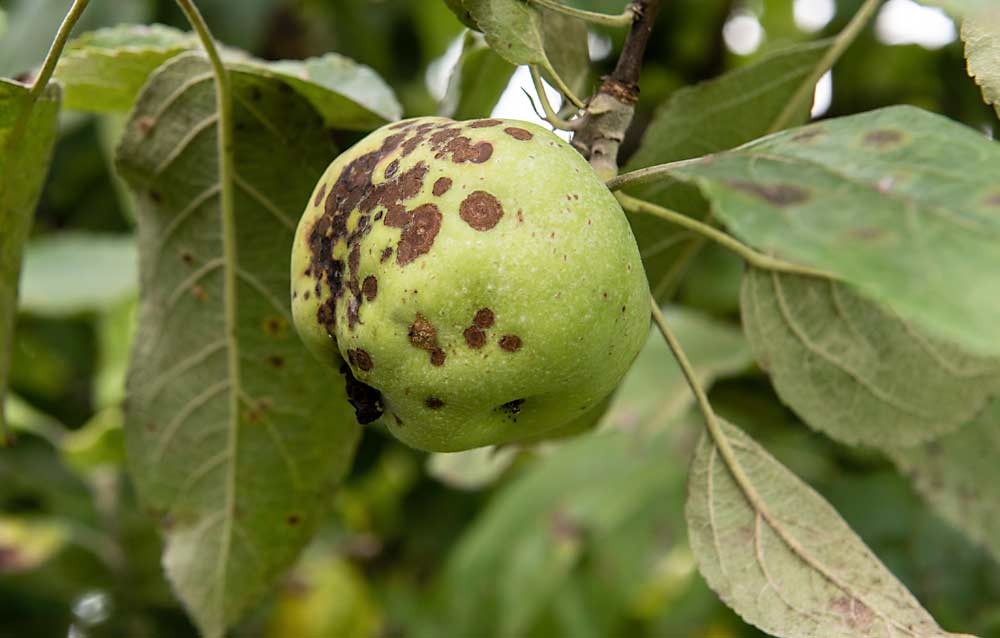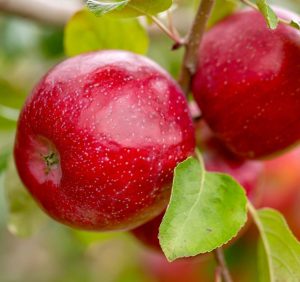—by Matt Milkovich

Genetic resistance to apple scab remains relatively rare in commercial apple varieties. Of the few that have it, most get their resistance from the Vf gene, which breeders tried to incorporate into new cultivars for nearly a century, long before scientists found the clear genetic markers that now make it relatively easy to locate within the apple genome.
Researchers from Cornell University and the University of Minnesota are collaborating on a project to add more genetic layers of scab resistance to apple breeding lines, to make the disease resistance more durable in the face of pathogen evolution. UMN released MN80 (marketed as Triumph) a few years ago, lauding its two layers of scab resistance: one from the Vf gene and one inherited from its Honeycrisp parent.
Cornell geneticist and fruit pathologist Awais Khan and UMN fruit breeders Matt Clark and Jim Luby are using advanced genomic techniques to discover candidate genes that cause scab resistance. Their three-year project, which runs through 2025, is funded by the U.S. Department of Agriculture’s Agriculture and Food Research Initiative.
Among their specific goals, they aim to learn whether or not Honeycrisp and Antonovka, a group of Eastern European varieties known for being resistant to scab, have the same scab-resistance gene and, therefore, the same mechanism of resistance. If the genes are different, a third form of resistance can be bred into new apples.
“We know (the Vf gene) is different from Antonovka and Honeycrisp, but we don’t know if the Antonovka and Honeycrisp genes are the same,” Khan said.
The Vf gene came from Malus floribunda 821, a crab apple. It took years for breeders to remove the crab’s unwanted traits while preserving its scab resistance to create commercial breeding lines. Honeycrisp and Antonovka are already commercial apples with desirable characteristics, so working their scab resistance into new breeding lines will be a much faster process, Khan said.
Khan led the research team that sequenced the Honeycrisp genome in 2022, as well as Antonovka’s genome last year. As part of the current project, his team will “fine map” both genomes using cutting-edge genomic tools. Pinpointing and differentiating the candidate genes won’t be easy (apples have 17 chromosomes, with about 45,000 genes divided among them), but Khan is confident they’ll determine if Honeycrisp and Antonovka share the same scab-resistance gene by the time the project ends.
Clark, who first mapped Honeycrisp’s scab resistance during his doctoral work a decade ago, said that isolating and marking scab-resistance genes will help breeders develop durable resistance in breeding lines, which could greatly aid growers in scab-prone regions of the country. But genetic resistance alone won’t completely solve the apple scab problem, he said. Growers will always need other tools.
“It’s not a panacea for resistance,” Clark said. “It’s a tool in a toolbox.” •








Leave A Comment